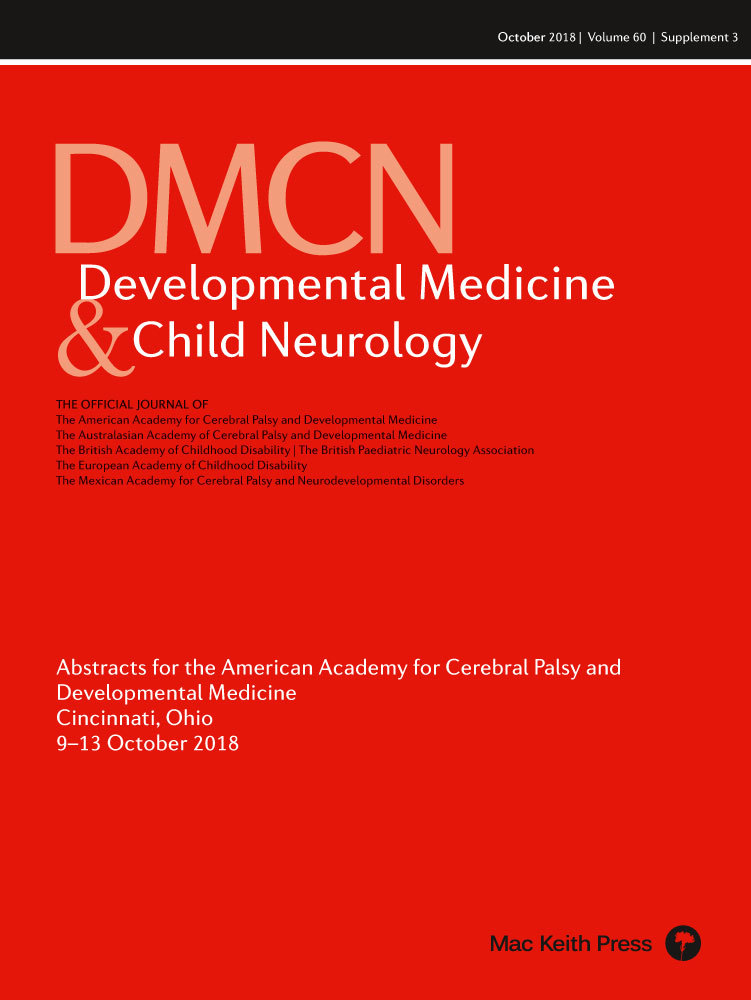Classifying adverse events following lower limb orthopaedic surgery in children with cerebral palsy: reliability of the modified Clavien-Dindo system
J1
L Zhou1,2, C Gallagher1, P Thomason3,4, K Willoughby1,5, M Harambasic1, S Donath6, A Khot1,2, K Graham1,2,4
1Orthopaedic Department, Royal Children's Hospital, Melbourne, Australia; 2Department of Paediatrics, University of Melbourne, Melbourne, Australia; 3Hugh Williamson Gait Analysis Laboratory Royal Children's Hospital Melbourne, Australia; 4Murdoch Childrens Research Institute, Melbourne, Australia; 5Centre of Research Excellence in Cerebral Palsy, Murdoch Children's Research Institute, Melbourne, Australia; 6Clinical Epidemiology and Biostatistics Unit, Murdoch Children's Research Institute, Melbourne, Australia
Background and Objective(s): The reporting of surgical adverse events (AEs) is a critical component of surgical outcome studies but does not always receive adequate methodological rigour. In an effort to address this, Clavien and Dindo developed a widely used classification system for AEs, which was further modified by Sink and colleagues for orthopaedic hip preservation surgery. The Modified Clavien-Dindo (MCD) system has since been utilised in studies involving lower limb surgery for ambulant and non-ambulant children with cerebral palsy (CP). However, the profile of AEs recorded in children with CP compared to typically developing children is different, and the reliability of the MCD in CP is unknown. This study aimed to evaluate the inter-rater and intra-rater reliability of the MCD for classifying AEs following lower limb surgery in children with CP.
Study Design: Qualitative Reliability Study.
Study Participants & Setting: Eighteen multi-disciplinary raters were invited to participate, including clinicians from surgical, nursing and physiotherapy professions, and individuals with CP. Ratings were conducted on-site, within a tertiary pediatric hospital.
Materials/Methods: Modifications of the MCD by Sink and colleagues2 were made to reflect the profile of AEs observed in children with CP3-4. Forty real-world clinical scenarios were created from AEs recorded in a tertiary pediatric centre. Each scenario was based on actual clinical events with a minimum two-year follow-up. Information was presented in PowerPoint and included age, gender, GMFCS level, clinical and operative information, details about the AE, management of the AE, and long-term outcome. Clinical photographs or radiographs were used to illustrate each scenario. Following an education and MCD familiarisation session, ratings were conducted on two occasions, two weeks apart. Fleiss’ kappa statistics were used to calculate inter-rater and intra-rater reliability.
Results: The overall Fleiss’ kappa value for inter-rater reliability was 0.73 (95% confidence interval 0.64–0.82). The average Fleiss’ kappa value for intra-rater reliability was 0.78, with a range of 0.48–1.00. A kappa score of 0–0.2 was deemed as poor, 0.21–0.4 fair, 0.41–0.6 good, 0.61–0.8 very good, and 0.81–1.0 almost perfect agreement.
Conclusions/Significance: The Modified Clavien-Dindo System demonstrates very good inter-rater and intra-rater reliability following lower limb surgery in children with CP. The MCD can be used by clinicians from different health care professions with a high level of reliability. This may improve standardisation of recording AEs with a view to audit, clarity in the reporting of surgical outcome studies and most importantly, the prevention of sequelae from AEs.




